 Home
Gallery
Contact
Events & Projects
Projects: 2019 On
Film & TV
Archive & Links
Home
Gallery
Contact
Events & Projects
Projects: 2019 On
Film & TV
Archive & Links
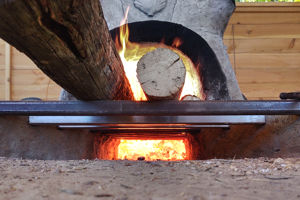
 Home
Gallery
Contact
Events & Projects
Projects: 2019 On
Film & TV
Archive & Links
Home
Gallery
Contact
Events & Projects
Projects: 2019 On
Film & TV
Archive & Links
|

|
2020 Furnace and Lehr at Quarley - Firing Six - Furnace Performance and Lehr
Projects: 2019 Onwards
Shelter Build
Wood Gathering and Processing
General Preparation
Firepit Construction
Furnace Installation
Lehr Installation
Floodproofing
Firings One and Two
Firing Three
Firing Four
Firing Five
Firing Six
------------------------------------------------
Furnace Performance and Lehr Pots, Collars and Breakages Glassblowing Day Eleven (Chasing 1300°C)
|
Furnace Performance
Fuel Use
For most days, as in Firings Four and Five, we raised the temperature to 1000°C using Chestnut, then switched to another wood (either Opepe or Sycamore), reasoning that as Chestnut was high in sulphur, not using it for blowing would be sensible. Unfortunately, we still had attack on the surface of the glass using these single species burns. Although we used a variety of small, medium and large pots in this firing, we again allowed room for the flames and waste gases to flow through the furnace, lessening burnback. The firing on the final day (Day Eleven) has been treated as a separate firing, and is recorded on this page.
Furnace Atmosphere
After the first four days, the colour of the ash changed to a dark grey - probably due to a greater proportion of charcoal in the ash. This possibly indicates a more reducing atmosphere, but does not appear to be related to the wood species or the furnace temperatures.
Furnace Condition
Pot Filling
This approach worked, but we found that the cakes which were annealed tended to split and cracked on the reheat - in one case the explosions completely destroying a pot, whereas those which were not annealed tended to split much less. See Pots, Collars and Breakages for photos of this destruction.
Glass Vessel Surfaces
None of these trials worked completely, so we have concluded, reluctantly, that the furnace design is causing the problem: allowing sulphur and possibly too much flame to contact the glass surface during the reheats. It is worth noting that we encountered very little of this problem at Stourbridge in 2019, and the only design feature we have introduced is the grate in the stoke hole tunnel. Again, we will address this problem in the rebuild, making it easy to cut down the air introduced into the tunnel, as well as introducing shelves to divide the furnace into a firing chamber and a melting / reheating chamber and sheltering the glass as much as possible from the flames. |
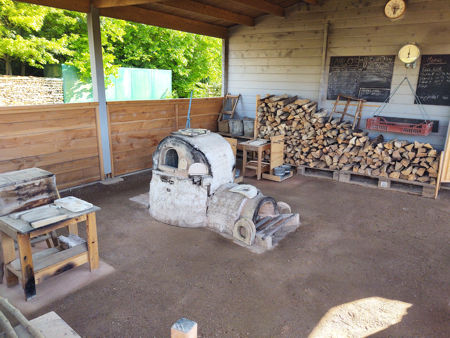
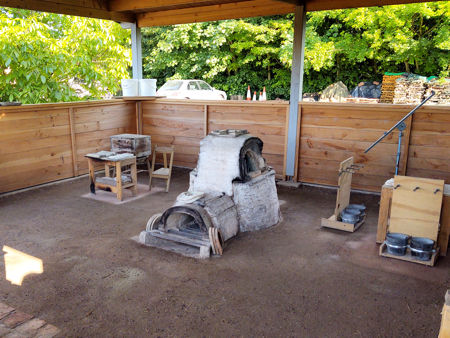
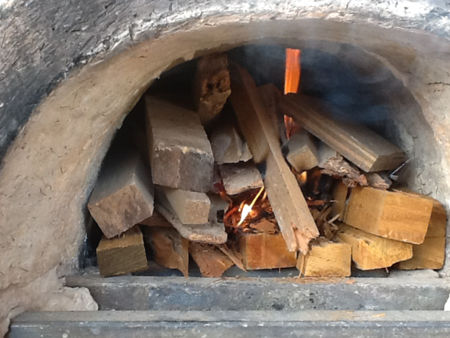
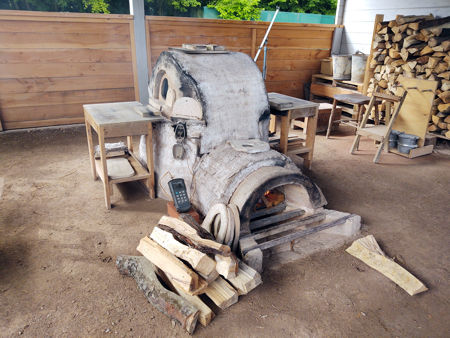
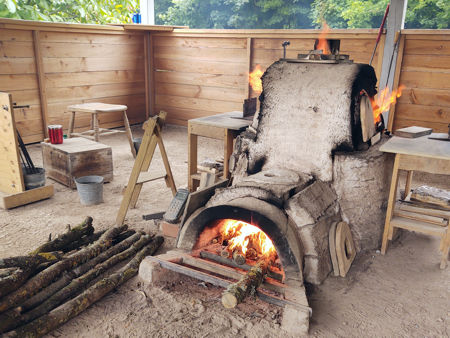
|
|
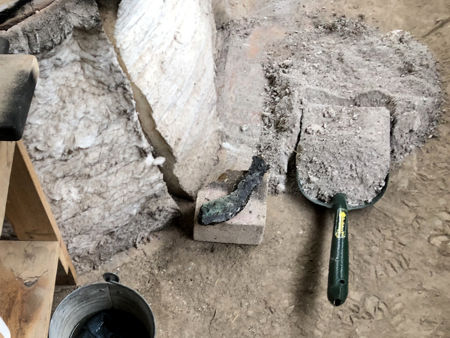
|
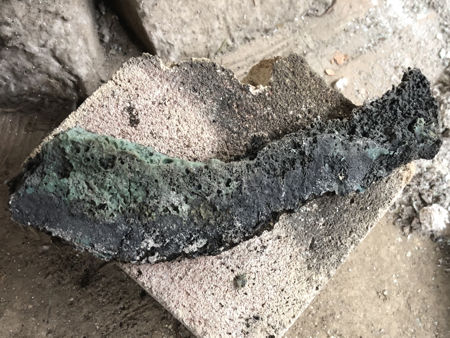
|
|
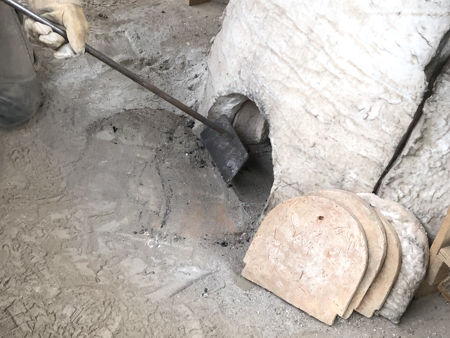
|
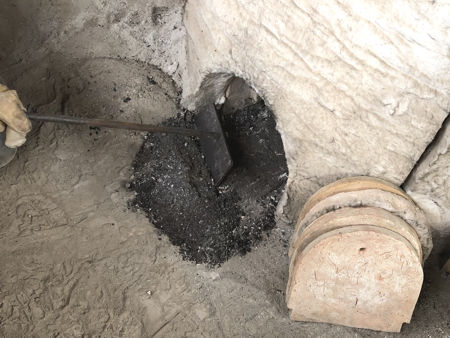
|
|
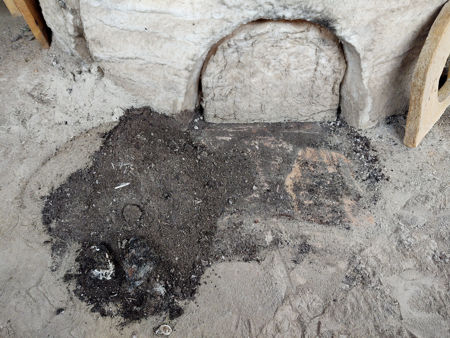
|
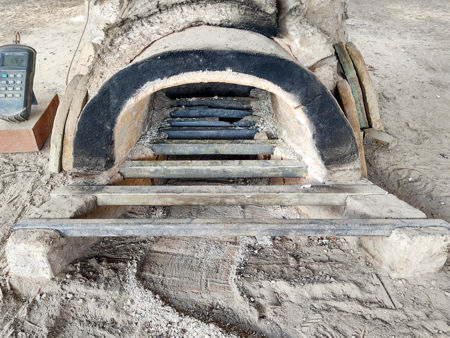
|
|
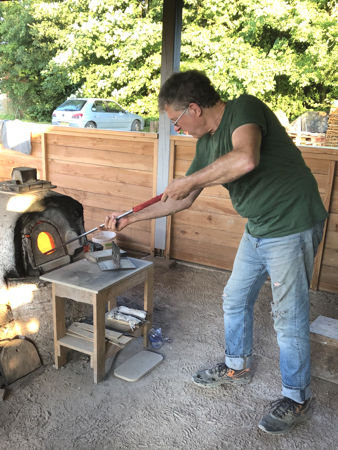
|
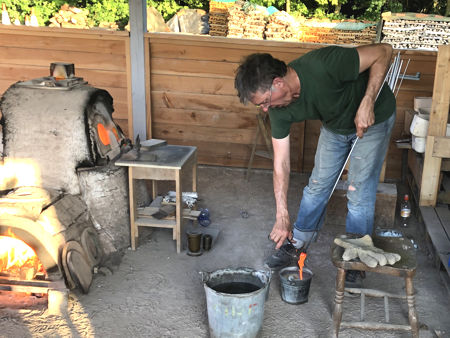
|
|
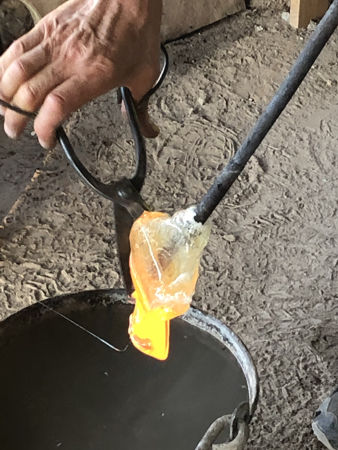
|
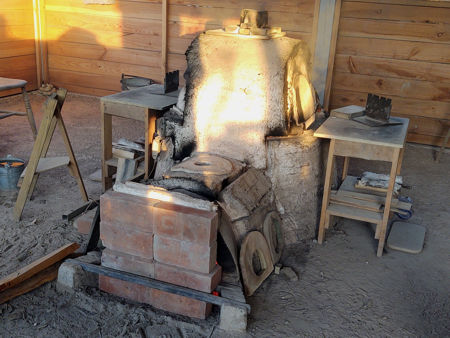
|
|
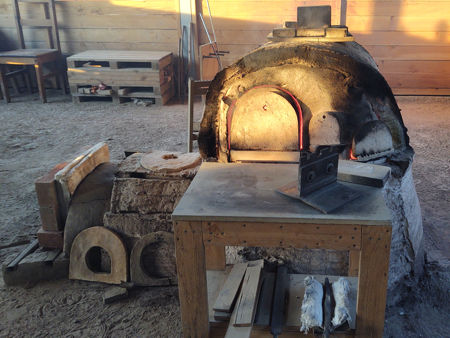
|
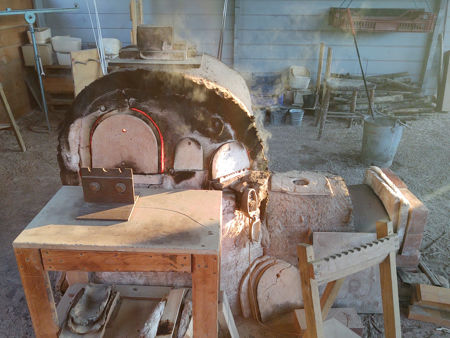
|
|
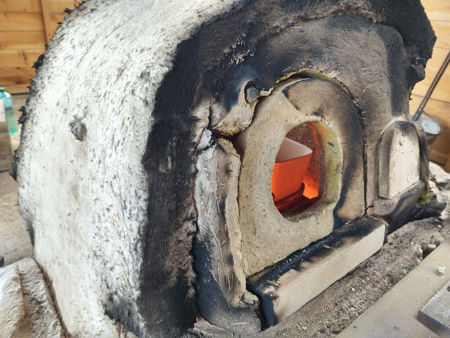
|
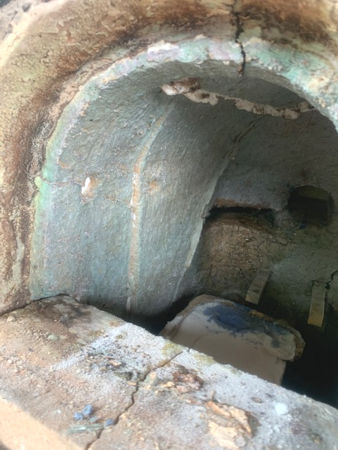
|
|
Lehr
The lehr caused no problems, and annealed the glass well. We tried one experiment: putting one goblet under a bell jar, so protecting it from the atmosphere, and left the next goblet exposed to the atmosphere. There was no difference: both had glass attack from the furnace. So it was not the lehr causing the problem. |
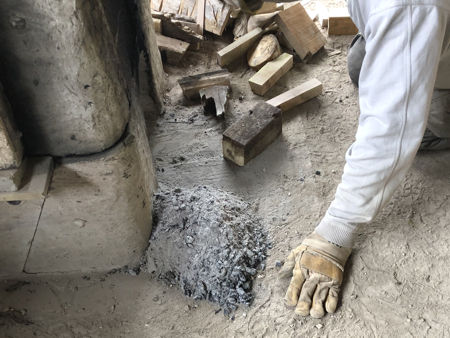
|
|
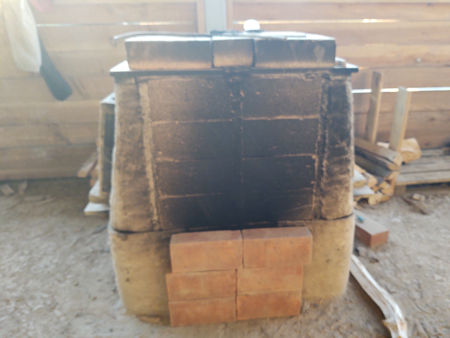
|
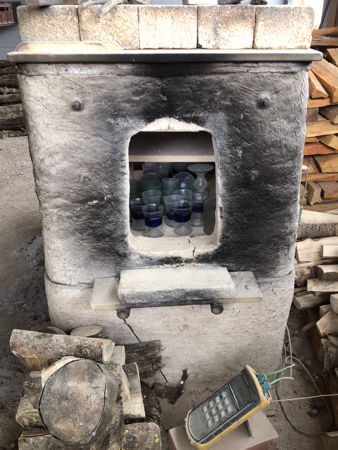
|
|
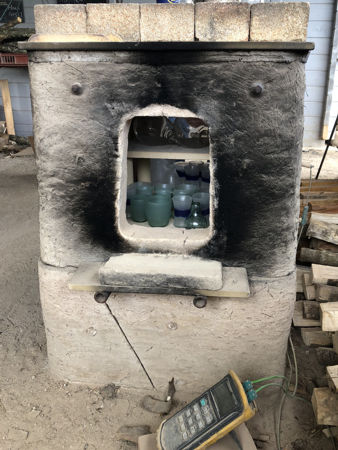
|
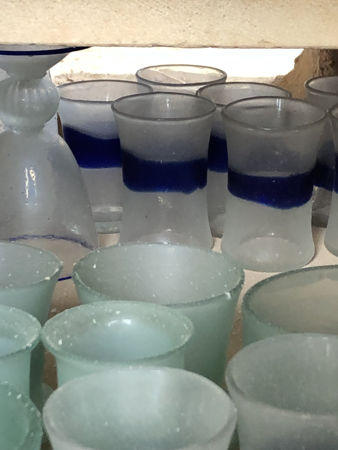
|
|
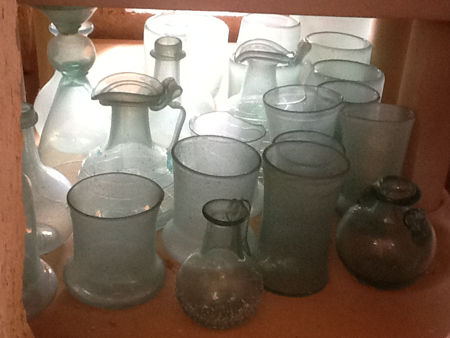
|
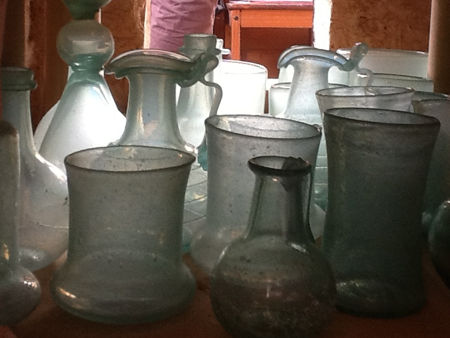
|
|
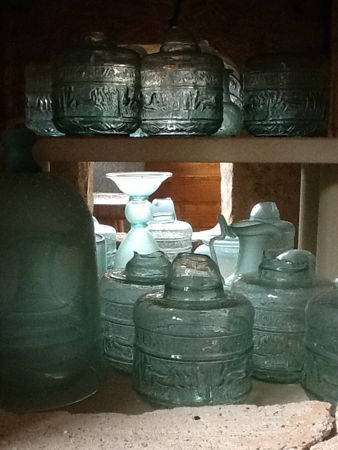
|
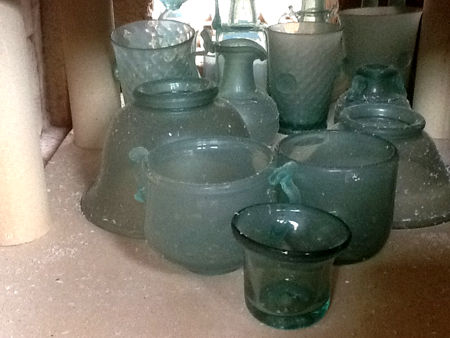
|
|
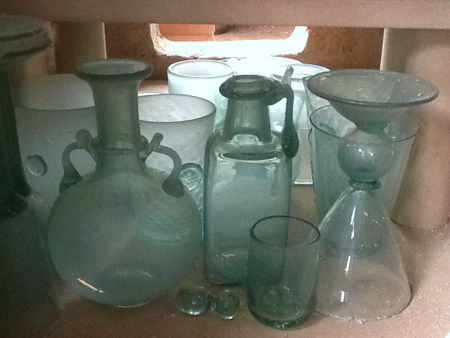
|
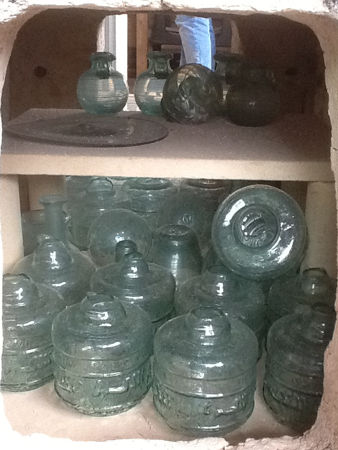
|
|
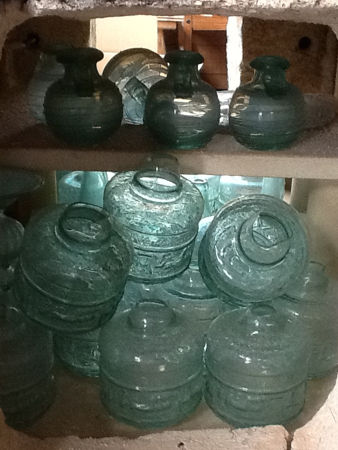
|
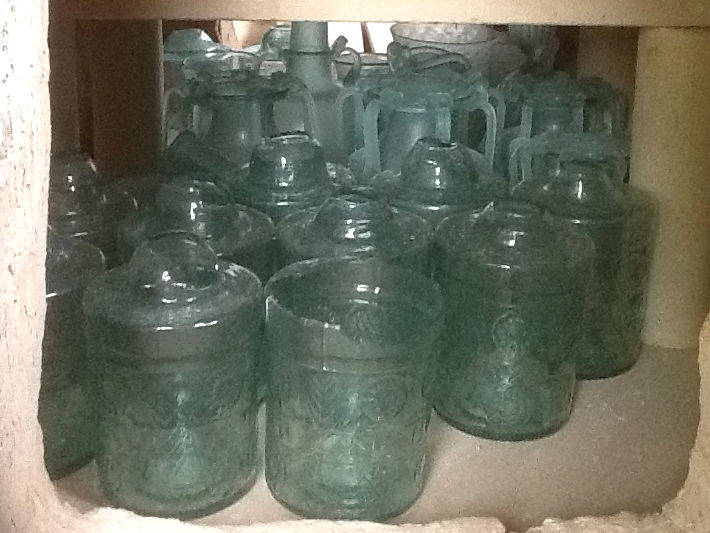
|
|
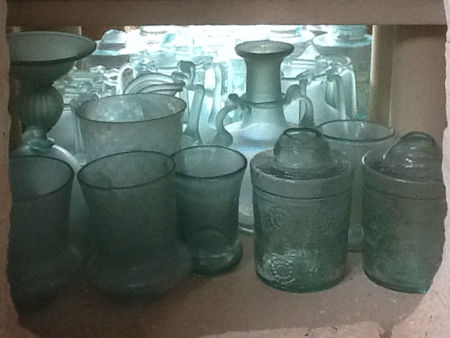
|
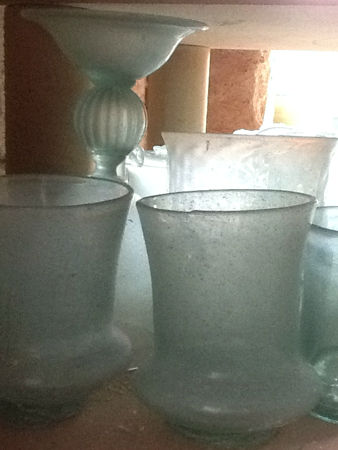
|
|
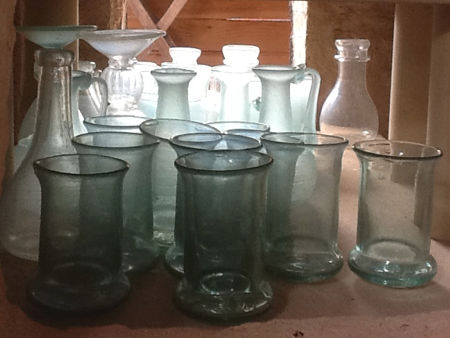
|
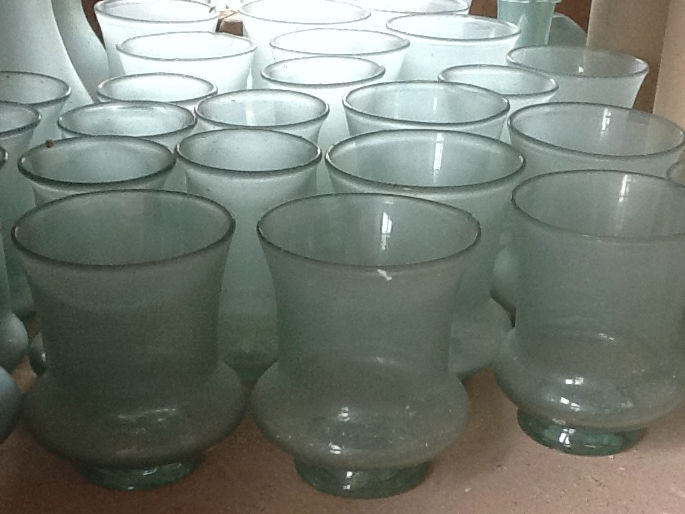
|
|
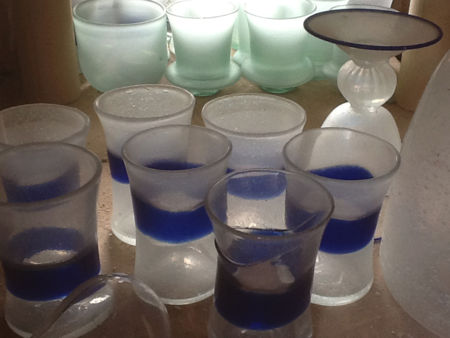
|
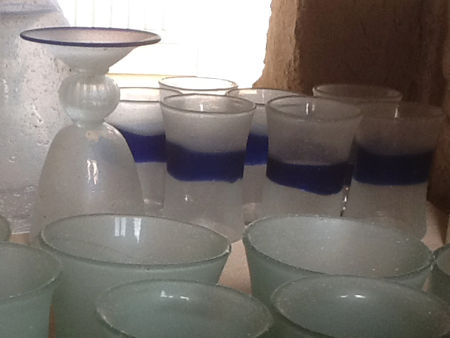
|
|
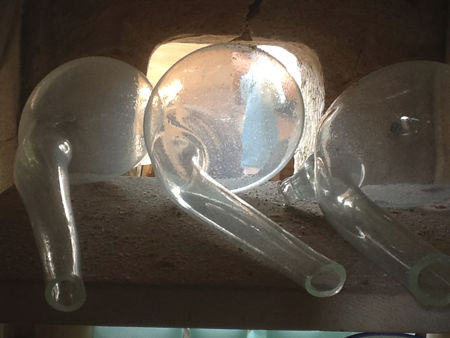
|
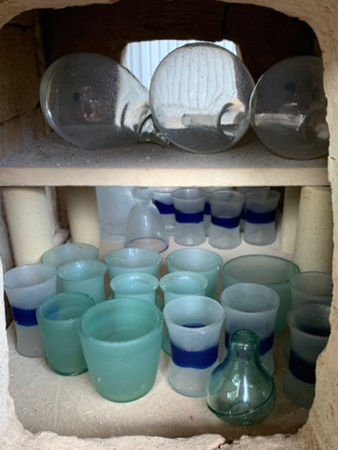
|
Home Gallery Contact Events & Projects Projects: 2019 Onwards Film & TV Archive & Links